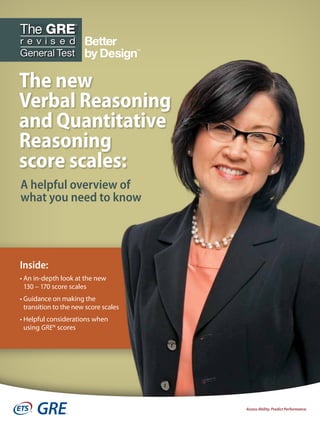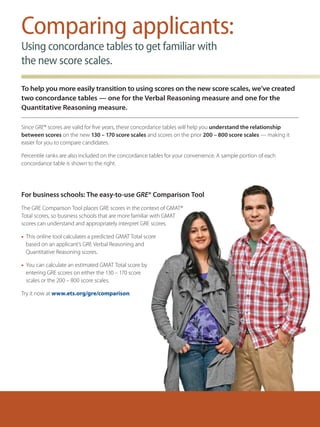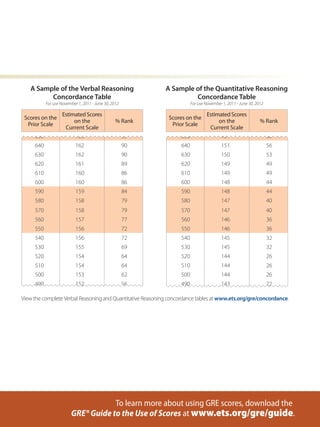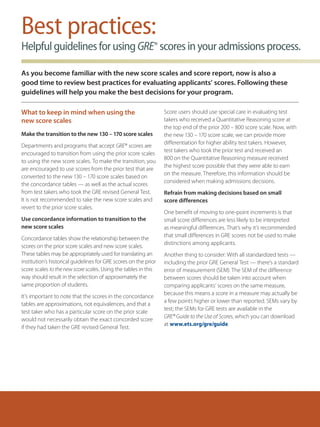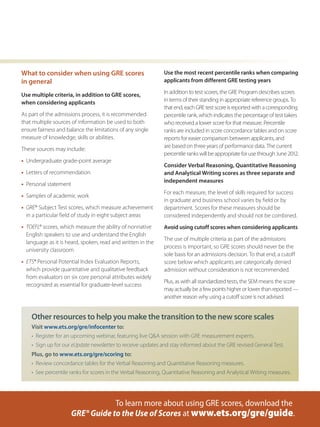The document provides information about the new GRE score scales introduced in August 2011. It discusses the new 130-170 score scales for the Verbal Reasoning and Quantitative Reasoning sections, which report scores in one-point increments, as well as the unchanged 0-6 scale for Analytical Writing. It also provides guidance for graduate programs on transitioning to the new scales and effectively evaluating applicants' scores.
